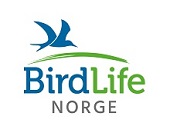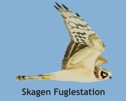
|
|
Yellow Wagtail subspecies feldegg. “Black-headed Wagtail” (1st for the station and 6th for Norway). Report from spring 2025
The total of birds ringed this spring has been 39 % under average: 497 birds ringed (average for spring is 813) of 40 different species, 8 less than last year. Weather The average temperature has been 0.8°C higher than normal (from March 1 to June 10). The precipitation was below average in March, April, May and June, raining during the spring 55 % under normal. There was a couple of days during the last week of May with high precipitation and wind, which probably affected some nests and therefore the breeding success of some species in the area. This spring there have been 14 days without ringing due to weather conditions, which is a low number compared to the last 5 years (average 18 days). Ringing The number of ringed birds has been 39% under average and the number of species has been much lower than last year. The "top 5 species" in the nets have been Common Staring (78), Willow Warbler (55), Chiffchaff (52), European Robin (49), and Common Linnet (30). Most warblers have shown very low numbers. Willow Warbler and Blackcap have been ringed 55% and 59% respectively under average, showing both some of the lowest numbers since 1990. Garden Warbler and Common Whitethroat have also been ringed in low numbers, 32% and 30% respectively under average. The Chiffchaff is the only species showing high numbers, being ringed 21% over average, and showing high numbers during the last 12 years. The number of Goldcrests ringed this spring have been the lowest ever with a total of 3 individuals (average is 28). The large thrushes were ringed in low numbers as it has been happening the last years. Song Thrush, Blackbird and Fieldfare have been ringed 68%, 63% and 92% respectively under average this season. The first two species show the lowest ringing numbers ever. The Northern Wheatear was ringed 23% down average, probably being affected by the low numbers during the last years (record low numbers in 2024). The Common Redstart and Robin were ringed 79% and 52% respectively under average. No Stonechats were caught in the nets this spring and there have been four breeding pairs in the area being three of them successful. Dunnock and Meadow Pipit were ringed in very low numbers, reaching the lowest (-90%) and the third lowest (-70%) numbers ever respectively. However, White Wagtail has been ringed above average (+203%) and has shown high numbers for the last 15 years. The number of finches showed in general very low ringing results, including Chaffinch, Siskin and Yellowhammer. Linnet and Goldfinch were the only finches ringed over average. Spring 2025 was the seventh one in a row without any Rosefinch in the nets. The breeding Wheatears have not been monitored in the station area in 2025. Less staff was available this spring. Observations From January to June, 185 species were recorded in the station area. Some species have been recorded in very high numbers. Gadwall, Northern Pintail, Razorbill, European Shag, White-tailed Eagle, Chiffchaff, Stonechat and Goldfinch have shown some of the best numbers since we started counting in 1990. Mallard, Common Gull, Red-throated Diver, Guillemot, Northern Gannet, Carrion Crow, Hooded Crow, Yellow Wagtail and Rock Pipit are some of the species that have shown high numbers this spring. On the other hand, Long-tailed Duck, Collared Dove, Common Snipe, Common Sandpiper, Black-legged Kittiwake, Black-headed Gull, Common and Arctic Tern, Great Skua, Fulmar, Fieldfare and Brambling were seen in numbers between 77% and 92% below average. For many waders, the number of observations has become much lower during the last years, and this year has not been an exception. Ruff, Dunlin, Redshank and Wood Sandpiper are some examples. Lapwing, which has been showing very low numbers the last 13-14 years, has shown some increase since 2023. A total of 7 Lapwing nests were found and monitored in the area, resulting with at least half of hatched. Several chicks were seen during weeks. This is the best number of breeding pairs in the area for many years. Bar-tailed Godwit and Green Sandpiper were the only waders registered with much higher numbers than normal. There have been a few notable or rare species in the area during the spring. The most special observations were Mandarin Duck, Surf Scoter, European Nightjar, Stone Curlew, Great Snipe, Caspian Gull, Little Egret, European Bee-eater, Firecrest (record number), Yellow Wagtail subspecies feldegg - “Black-headed Wagtail” (1st for the station and 6th for Norway), Yellow Wagtail subspecies flavissima (a breeding pair) and Tawny Pipit. The bird station continued to guide schools and private visitors in the spring in collaboration with the Visitor Center Wetland Lista. Willem Verboom (Netherlands), Gunnar Gundersen (Norway) and Benjamin Grimsby (Norway) have been responsible for the migration counts, and they, together with Conrad Müller (Norway) and Helen Svensson (Norway), have been volunteers at the station and collaborated with ringers Nils H. Lorentzen (Norway), Marie Chevalier (Belgium), Andreas Winnem (Norway), Jan Erik Røer (Norway) and Rune Christensen (Norway), as well as Aïda López who has been responsible for the work at the bird station in the spring of 2025. If you want to check the list of birds ringed during this spring, click HERE. | |||||||

| Ringing numbers |
|
Sorry, but we are outside of the spring and autum seasons. Detailed log |
| Reportasje fra Lista FS i Aftenposten |

|
| Seasonal deviation | ||||||||||||||||||||||||||||||
|
|
Følg Følg Lista FS på facebook.com |
| Siste 5 på siden |
|
Looking for bird ringers for spring and/or autumn 2026 Report from spring 2025 Festivalgjester presenterer ny fuglebok Lista Fuglefestival 2025 Report from autumn 2024 |
Lista Fuglestasjon
Fyrveien 6
NO-4563 Borhaug
post@listafuglestasjon.no Tlf: 949 86 793
 |  |


 Only in English
Only in English



